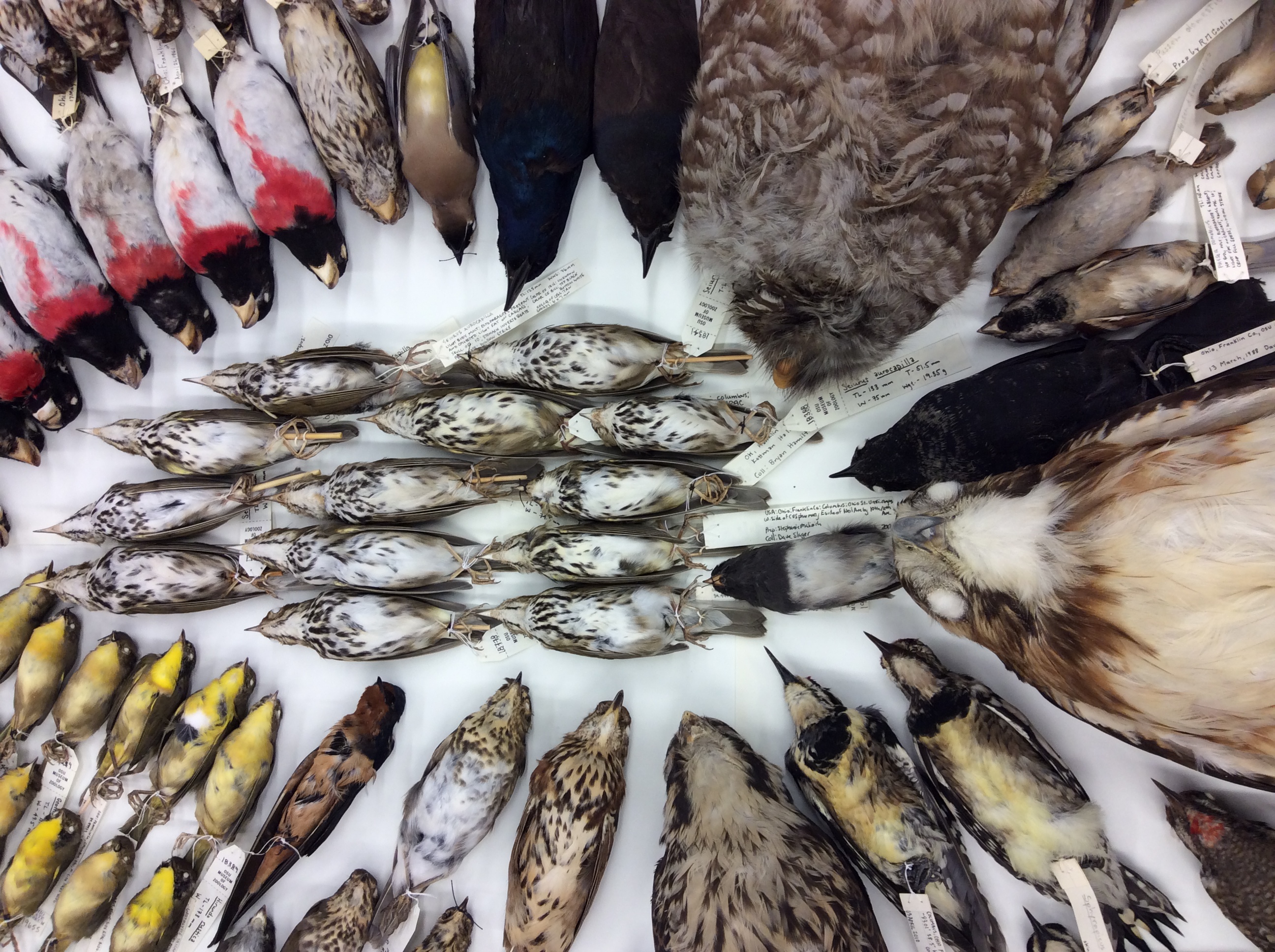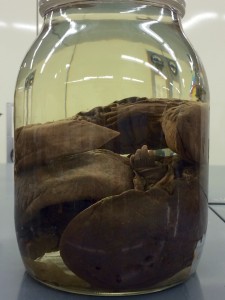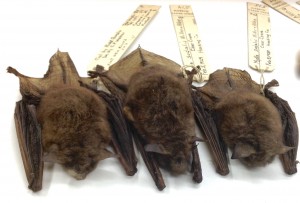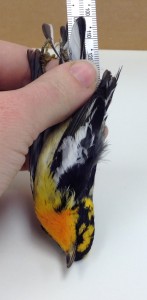Most of the amphibian species in the Tetrapod Collection are preserved in jars and, since the specimens are rather small, many of these jars aren’t very big. For something like a frog or a toad, a large jar isn’t really needed. However, there is one species of amphibian that is so massive, we need to use our biggest jars in order to contain it. If you like amphibians, you may want to read on.
The Eastern Hellbender (Cryptobranchus alleganiensis alleganiensis) is a salamander species that can reach up to two feet in length. Just think about the average salamander length of 4-8 inches, and then triple that! If that isn’t enough to impress you, these salamanders can have a life expectancy of anywhere
from 25 to 60 years! With that kind of lifespan, the Eastern Hellbender can probably outlive most of your pets. Just like their name implies, the Eastern Hellbender is found throughout the eastern U.S. with a few populations in the southern end of Ohio. They are aquatic amphibians that can be found under large stones in rocky riverbeds where there is an abundance of their favorite food item, crayfish. They have wrinkly brown skin, which is often used by observers to distinguish them from their closely related cousins, the Mudpuppy. For more general facts about the Eastern Hellbender, visit the Ohio Amphibians website.
We have eleven Eastern Hellbender specimens in the collection, the oldest of which was collected in the Ohio River near Cincinnati on March 22nd in 1901 (bottom left on the map). The last specimen to be added to the collection was from 1970, with no new specimens added since then. Given the size of these animals, coupled with the fact that more than half of our hellbender specimens from Ohio, you may wonder why you’ve
never seen one in the wild (if you have, then I truly envy you). Well in, addition to being nocturnal, these salamanders have become rather rare. While there has been some recent improvement, the population of hellbenders has been steadily declining in the last few decades. Threats such as pollution of rivers, disease, and stocking of game fish, have reduced the Eastern Hellbender’s numbers noticeably.
So as I’m sure you can imagine, finding an animal for research is very difficult. According to a recent paper by Olsen et. al (2012), eDNA methods could prove useful in finding hellbenders for study. The idea behind Environmental DNA (or eDNA) is that, by analyzing a sample of water or soil, you will be able to determine what species are in the area. In this study, Olsen et. al were able to detect Eastern Hellbenders by using the eDNA method on samples of water from rivers where these animals may be found. This opens up a whole new set of possibilities for scientific research since this method can make finding specimens much easier. To learn more about Olsen, Briggler, and Williams’ study, please click here.
It’s easy to see why these salamanders got the name hellbender. Thanks to their massive size, amazing longevity, and rarity in the wild, the Eastern Hellbender has earned a place in the hearts and minds of many naturalists; and if we keep our rivers and streams clean, we can ensure this will be true for many years to come.
References:
“Eastern Hellbender.” Ohio Amphibians. N.p., 26 Feb. 2012. http://ohioamphibians.com/salamanders/Hellbender.html
“Ohio’s Hellbender Population Set Up for Success.” Ohio Department of Natural Resources. N.p., 09 Oct. 2014.
http://ohiodnr.gov/news/post/ohio-s-hellbender-population-set-up-for-success
Olsen, Z. H., Briggler J.T., Williams R.N. 2012 An eDNA Approach to Detect Eastern Hellbenders (Cryptobranchus A. Alleganiensis) Using Samples of Water. Wildlife Research 39, 629-36. http://www.publish.csiro.au/?paper=WR12114





















